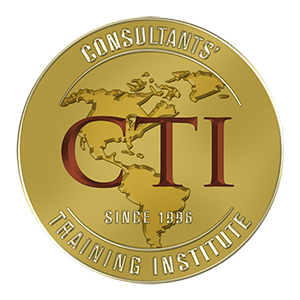
(Blog Series 7 of 10)
Did you know that by mid-2023, Gen Z and Gen Y (Millennials) already represented approximately 45% of the total workforce? These younger generations have different expectations from the workplace. According to World Economic Forum research, 73% of Gen Z and Millennial employees desire permanent flexible work alternatives. This could include a combination of at-home remote and on-site work, a four-day workweek, or simply allowing the employee greater freedom in deciding their working hours.
It is crucial to discuss this topic as part of the plan for a successful new year because there is no business without employees. I keep hearing clients express concerns about recruiting and retaining employees, a situation that is not new but has intensified in recent years. This limitation of having a robust workforce can impact revenues and, ultimately, the bottom line, sometimes hindering business owners from meeting their annual goals.
One thing I encourage business owners to do this new year is to embrace change in terms of where the job is performed. Granted, there are many positions where tasks are impossible to perform remotely, such as a waitress at a restaurant. However, many administrative and operational positions can be executed from a location other than a centralized office. The traditional notion of work confined to a physical office space is rapidly becoming obsolete. Embracing change means acknowledging this shift and adapting to new ways of working.
Don’t get me wrong; I am not suggesting employees should do whatever they want. But as an employer, you should consider offering certain flexible work options. For example, employees may work one or two days from home, ensuring not all core personnel are absent at the same time, minimizing the impact on the business and clients.
How can having this flexibility benefit the business? Here are the main areas where I see this option benefiting my clients:
Talent Acquisition and Retention: Remote work eliminates geographical barriers, allowing businesses to tap into a global talent pool. The ability to attract top-tier talent, regardless of their physical location, gives your business a competitive edge. Moreover, offering remote work options is a powerful retention tool, demonstrating a commitment to work-life balance and flexibility.
Increased Productivity and Efficiency: Contrary to common concerns, numerous studies have shown that remote workers often exhibit higher levels of productivity. Freed from the constraints of commuting and office distractions, employees can focus on delivering results. By embracing remote work, business owners can harness this productivity boost for the benefit of the entire organization. More supervision may be needed, but if done correctly, you will be able to identify those for whom the “privilege” of working from home is revoked.
Cost Savings: Maintaining a physical office comes with substantial costs – rent, utilities, office supplies, and more. Remote work allows businesses to reduce or eliminate these expenses, redirecting resources towards strategic initiatives or employee benefits. This cost-saving aspect can significantly impact the bottom line, especially for small and medium-sized businesses.
For business owners navigating this change, the key lies in a thoughtful and strategic approach. Here are some actionable steps to help you embrace change and remote work effectively:
Invest in Technology: Leverage collaborative tools, project management software, and communication platforms to facilitate seamless remote work.
Define Clear Policies: Establish transparent remote work policies that set expectations regarding working hours, communication channels, and performance metrics.
Foster a Remote-Friendly Culture: Encourage a culture that values results and embraces flexibility. Recognize and reward outcomes rather than focusing solely on the process.
Provide Training and Support: Equip your team with the skills and resources needed to thrive in a remote work environment. Offer training in virtual collaboration, time management, and digital communication.
Regularly Evaluate and Adjust: Continuously assess the effectiveness of your remote work strategy. Solicit feedback from employees, identify areas for improvement, and be willing to adapt your approach accordingly.
Embracing change is not just about survival; it’s about thriving in the dynamic business landscape of this new year. Remote work is a powerful tool in this arsenal of change, offering strategic advantages that go beyond the immediate need for flexibility. By recognizing the potential of remote work and proactively integrating it into your business strategy, you position your organization for sustained success and resilience in the face of whatever the future may hold. The time to embrace change and remote work is now, after all, why not adapt to a future where the possibilities are limitless?













